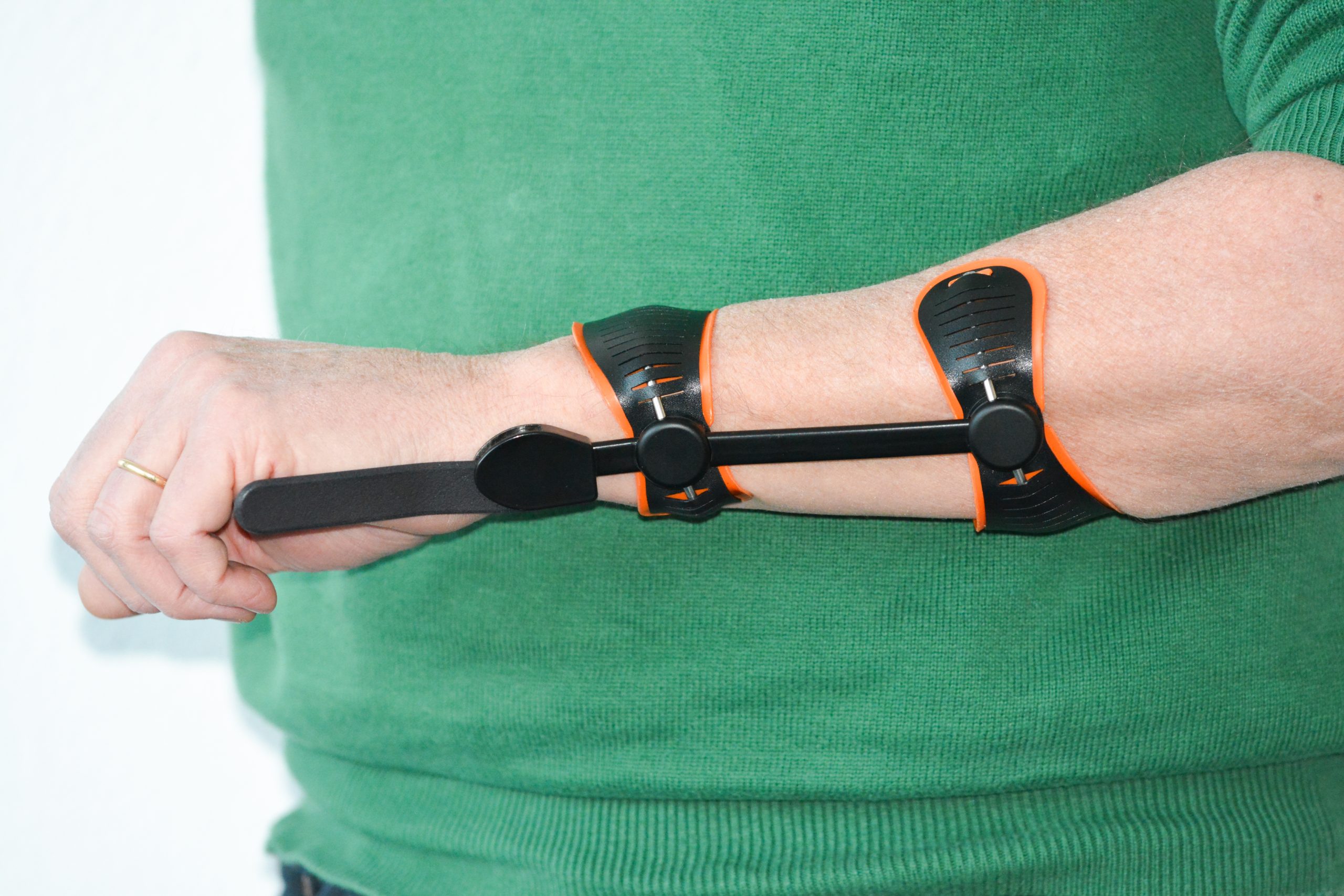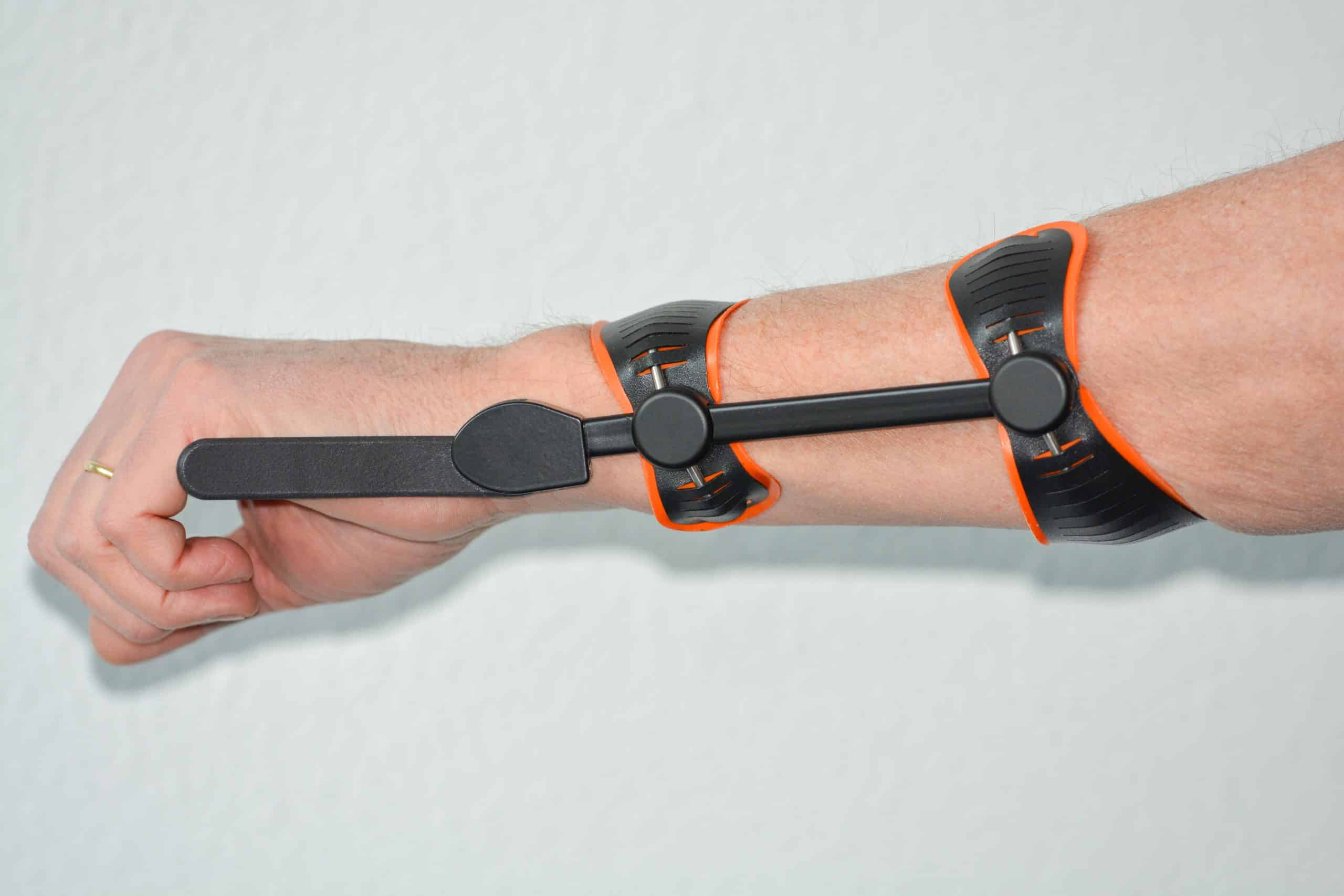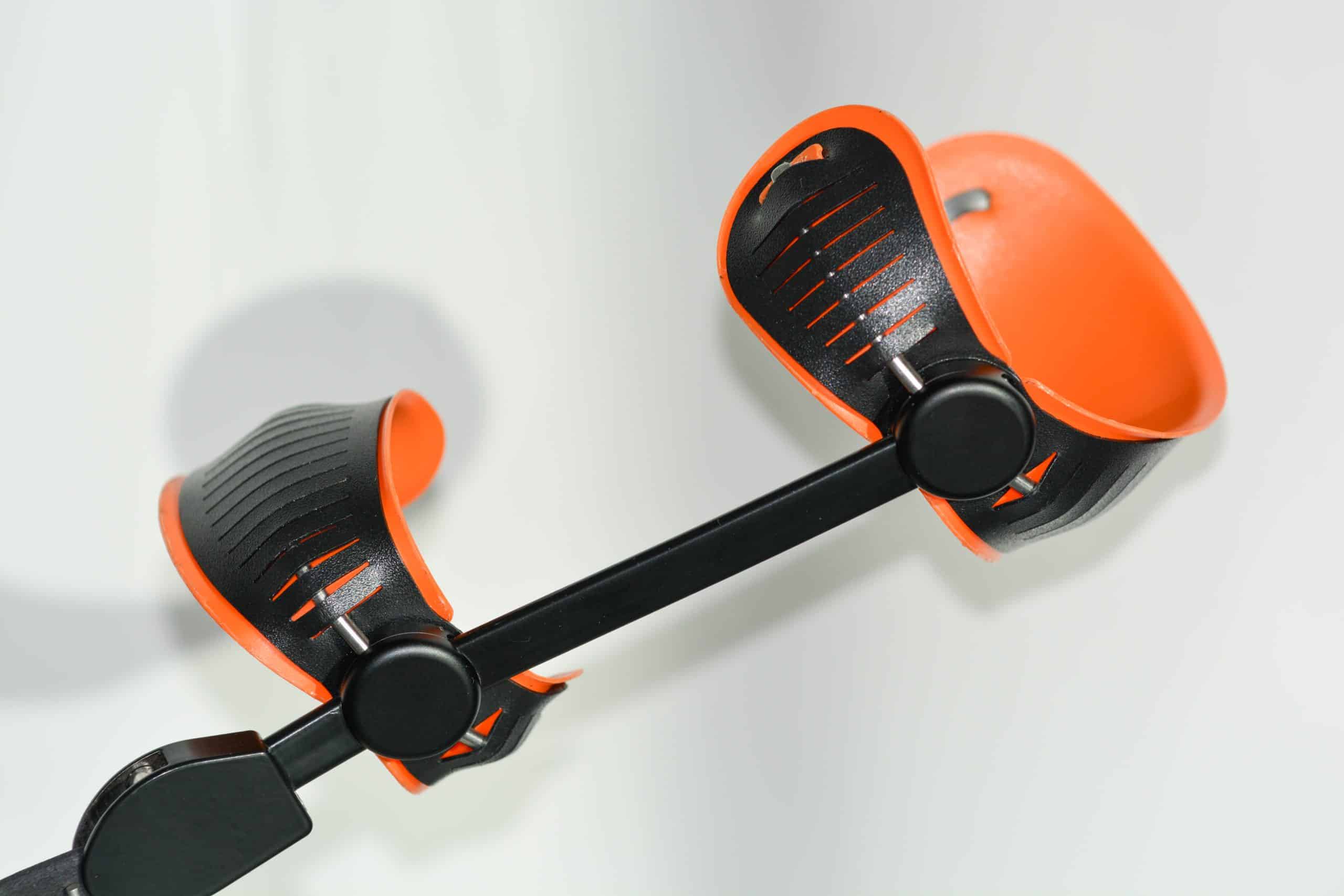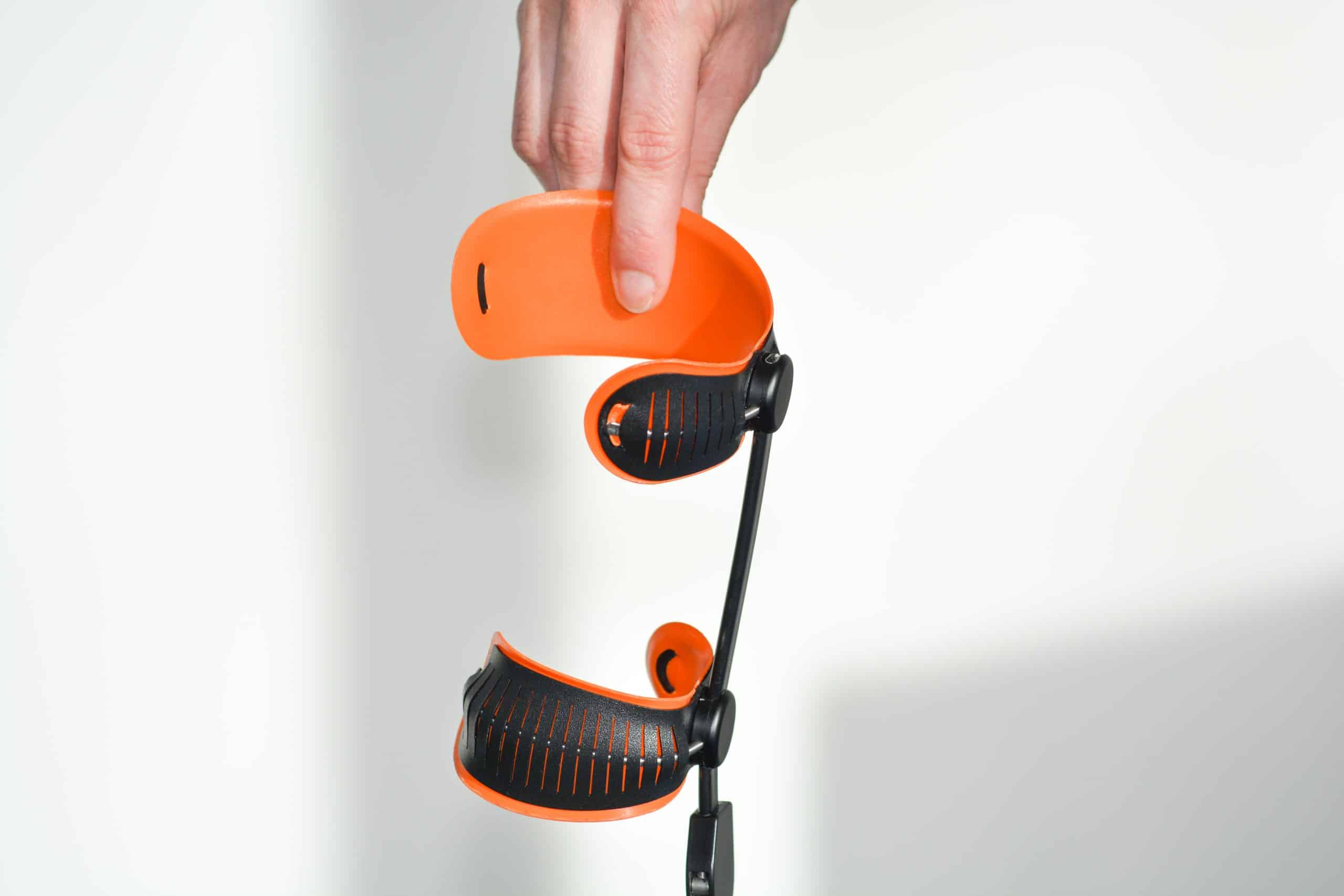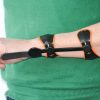Your go-to dropping hand solution
The Amber Wrist Brace is an innovative orthosis that helps you move independently again. It is designed for people who cannot lift their hand at the wrist to a neutral position and /or keep that hand in this neutral position. The most common condition leading to this is called wrist-drop, also referred to as drop hand or dropping hand. Whether navigating daily tasks or pursuing active lifestyles, the Amber Wrist Brace offers a solution to regain autonomy and confidence.
Key features:
- Ultimate hand support
- Custom-made
- High comfort of wearing
- Clinically approved
- Adjustable
- Light-weight
- Dynamic
- Wide colour selection with the changeable shells
Who is it for?
- Dropping hand patients (due to radial nerve compression, stroke, trauma or others)
- EDS patients
- Tremor patients
Please note that there are some counter-indications when Amber Wrist Brace might not be suitable. It includes but not limited to:
Moderate to serious spasticity (fingers and or wrist); high muscle tension (fingers and or wrist); wrist contracture; pressure and allergy-sensitive skin; pain in contact with the skin (f.i. neuropathic pain).
Not sure if the product is right for you?
If you have any questions about the product or whether or not it will be suitable for your specific clinical case, please don't hesitate to contact us! Our dedicated customer support team is available to provide prompt assistance and answer all of your questions.
How to adjust the angle of the Amber Wrist Brace?
Reclaim your mobility with the Amber Wrist Brace
The idea of losing mobility can be incredibly difficult and frightening. It can mean losing the ability to perform simple tasks that were once taken for granted, such as writing, cooking or even holding a phone. This can lead to a sense of isolation and dependence on others for support.
At Amber, we understand the challenges of losing mobility and strive to provide our patients with the best possible care to preserve their mobility and eliminate pain. Our goal is to help our patients continue to live their lives to the fullest, despite the challenges that come with mobility issues.

What is a wrist brace or a wrist orthosis?
A wrist brace or a wrist orthosis is a medical device that is worn externally to support the movement of your hand. It can be used for a variety of different medical conditions, such as EDS, dropping hands as a result of stroke, radial nerve compression or others. Amber wrist brace allows the user to regain active control over movements as well as the natural resting position of the hand
Who is the Amber Wrist Brace for?
The Amber Wrist is intended for people who can no longer raise their hand independently or keep it in that position for a longer period of time. This can be the result of paralysis of the Radial Nerve, for example. This is called a ‘Wrist Drop’, ‘Drop-hand’ or ‘Dropping Hand’.
The Amber Wrist thus supports the function of the muscles that normally lift or keep the hand lifted. Even if those muscles can provide enough power for a short time, but get tired quickly, the Amber Wrist can offer a solution. The Amber Wrist gives rest to those muscles and the wrist joint by maintaining the hand in a neutral resting position.
Clinical Indication for the Amber Wrist Brace
The human wrist is a vital element for a functional upper extremity. Loss of wrist function can cause significant disability and affect activities of daily living, work-related tasks, and recreational activities. Unfortunately, conditions to the wrist and its surrounding structures are fairly common. One such condition is called wrist drop, also known as drop hand.
Wrist drop, or drop hand, is a condition that results from damage to the radial nerve. If damage to the radial nerve occurs, weakness, numbness and an inability to control the muscles of the elbow, wrist and fingers may result. The radial nerve runs from the armpit down the back of the arm to the wrist and fingers and controls movement and sensation in the arm and hand and extension of the elbow, wrist and fingers.
Because the radial nerve innervates the extensor muscles of the wrist and fingers, those whose radial nerve function has been compromised cannot actively extend them. As such, the hand hangs flaccidly in a position of flexion when the patient attempts to bring the arm to a horizontal position.
Wrist drop most often occurs due to compression of the radial nerve, cerebrovascular accidents or trauma. Other causes include systemic nutritional deficiencies and inflammations or tumours around the radial nerve.
,,Radial Nerve Compression’’
Radial nerve compression is a common cause of wrist drop. Popular examples are the ,,Saturday night palsy’’ and the ,,Bridegroom palsy’’ or ,,Honeymoon palsy’’. Saturday night palsy classically involves an individual falling asleep with the arm hanging over a chair or other hard surface, leading to compression of the radial nerve within the armpit. Honeymoon palsy, on the other hand, refers to an individual falling asleep on the arm of another and consequently compressing that person’s nerve.*
*While these are the classically described presentations, one must be aware that Saturday night palsy can be caused by any unnatural positioning or use of the limbs that can cause compression by a similar mechanism. This includes but is not limited to compressive clothing or accessories, improper use of crutches, prolonged blood pressure cuff usage, and more.
,,Cerebrovascular Accidents’’
A cerebrovascular accident, also known as stroke, is a neurological event that compromises the blood supply within the brain. This can lead to a number of complications such as muscle weakness, stiffness, numbness, and paralysis, usually on one side of your body. As many as 80% of stroke survivors experience arm and hand impairment. Not having a fully functional arm and hand after a stroke is not only frustrating but also devastating to many individuals. Activities of daily living become more difficult, take longer to complete, and may require assistance from others. Although hand recovery after stroke can be slow and, at times, frustrating, there is always hope for regaining function through consistent rehabilitation.
,,Trauma’’
Traumatic causes of wrist drop include broken upper extremity bones due to sports and work accidents, falls, collisions, automobile, motorcycle and bicycle accidents, and knife and gunshot wounds.
The injury can be minor or serious and may include symptoms such as pain, swelling, numbness, tingling, weakness, decreased range of motion, or total paralysis of the elbow, wrist and fingers.

